May 2022 marks a full half century since the reversion of Okinawa Prefecture to Japan after 27 years under U.S. administrative control. While confronting many difficulties, the prefecture has capitalized on its unique local features to transform itself into a resort destination welcoming 10 million visitors a year. Take a closer look at the trajectory followed by Okinawa and the vision it intends to pursue.
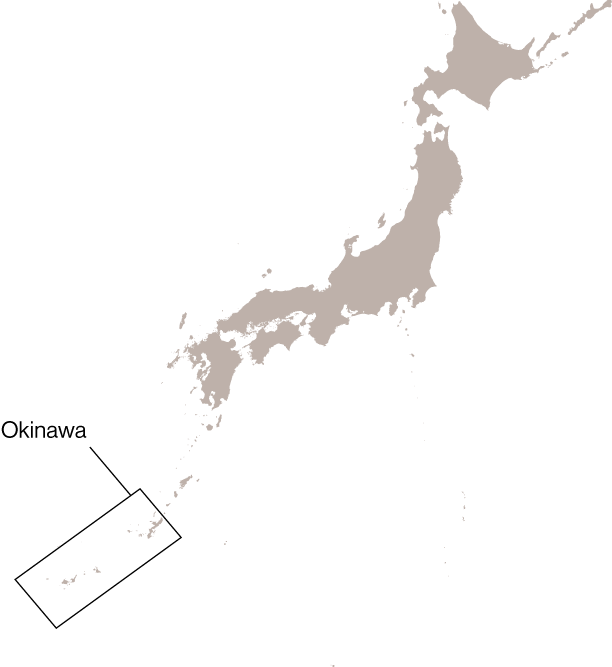
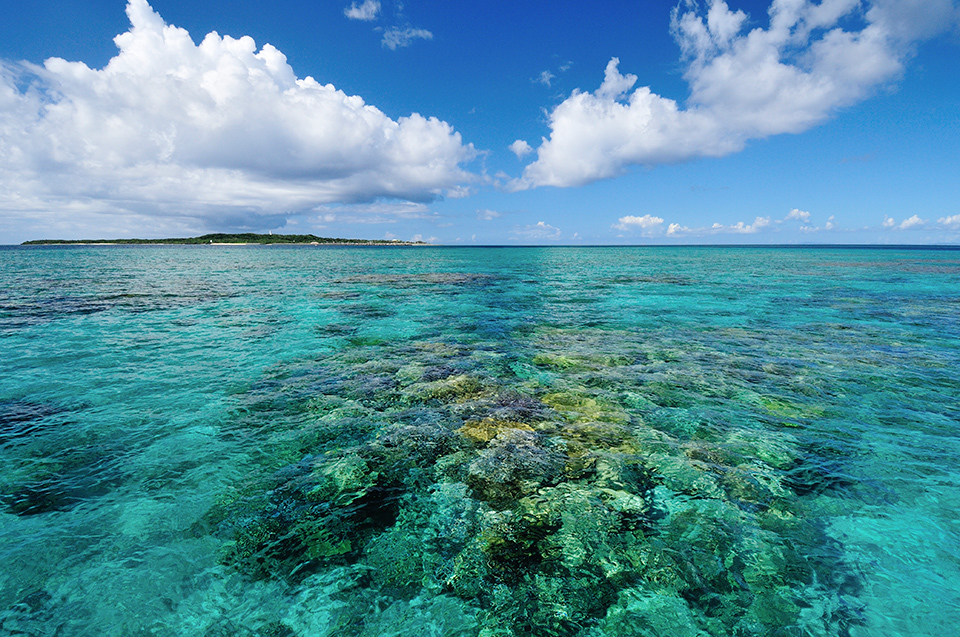
Okinawa’s greatest tourism resource is its beautiful ocean, which is also a treasure trove of diverse and rare marine creatures. Reportedly more than half of all coral species in the world live in Okinawa’s vast waters, which spread approximately 1,000 km from east to west. AFLO
“We were just glad we would no longer need passports to travel to and from the mainland. There was a great sense of expectation among the younger generation, myself included, 50 years ago,” recalls KAWAKAMI Yoshihisa, chief director of the Okinawa Development Finance Corporation, as he looks back on May 15, 1972, the day on which Okinawa Prefecture, under U.S. administrative control since the end of World War II, was returned to Japan. “But I think many of us residents were torn between feelings of hope and concern.”
Comprising more than 160 islands at the southwestern edge of Japan, Okinawa today has grown into one of the country’s leading resort destinations. Yet at the time of the reversion, the circumstances surrounding Okinawa were quite severe in various areas: income levels were less than 60% of the national average; various infrastructure development was falling behind; and disparities existed with mainland Japan in such areas as education, health care, and welfare. In addition to the confusion caused by the introduction of a new administrative and economic system, including the dollar-to-yen shift, the prefecture was also hit by the “Nixon shock” and the first oil crisis, the effects of which Japan as a whole was suffering.
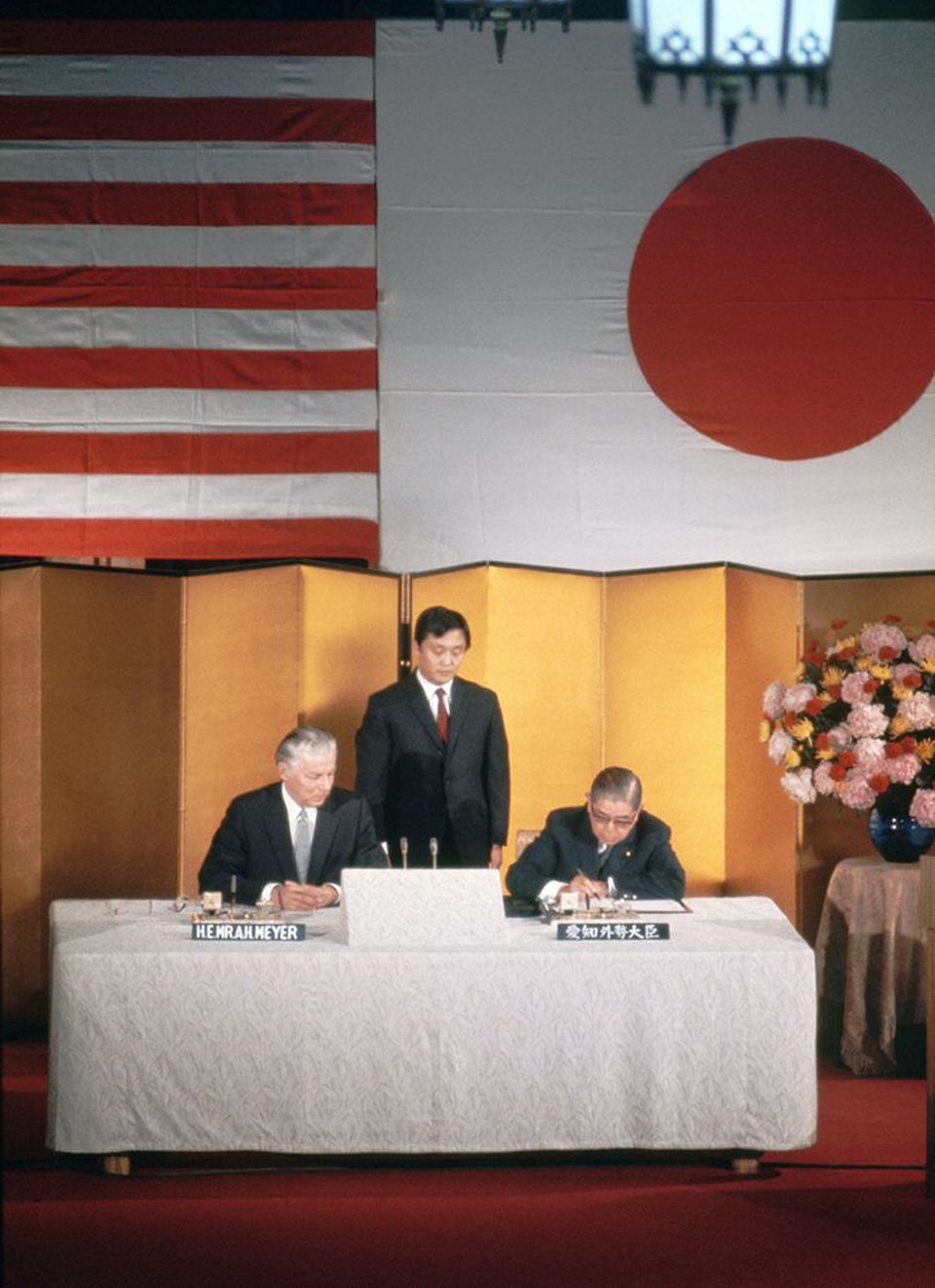
The signing ceremony for the Okinawa Reversion Agreement in June 1971. It was carried out simultaneously in Tokyo and Washington, D.C., and was broadcast live via satellite. THE MAINICHI NEWSPAPERS/AFLO
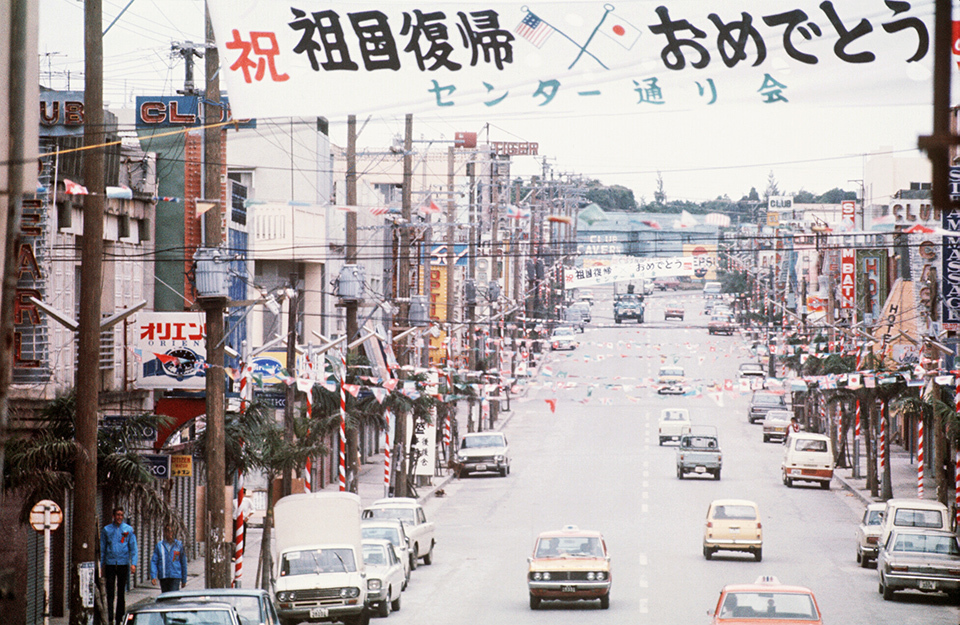
Okinawa on May 15, 1972, the day of its reversion to Japan. Displayed above the road is a banner celebrating the occasion. Under U.S. administrative control and for a while thereafter, cars drove on the right side of the road, but from 1978 onward they switched to the left in accordance with national traffic rules. Changing everything from traffic signals to signs and road markings was an enormous undertaking. THE YOMIURI SHIMBUN/AFLO
Even now, Okinawa bears the heavy burden of housing—within the prefecture’s own limited land space—more than 70% of the total exclusive-use U.S. Forces Japan (USFJ) facilities and areas in the whole country. Despite such difficult circumstances, the prefecture underwent a stunning transformation to become “tourism islands” visited by 10 million people a year. It has also striven to leverage its local characteristics and has succeeded in developing new industries besides tourism, including IT and global logistics, as well as having established OIST, an interdisciplinary graduate school offering world-class standards of research and education. Reflecting on the past 50 years, Kawakami says, “Okinawa has experienced a remarkable transformation unimaginable at the time of reversion.”
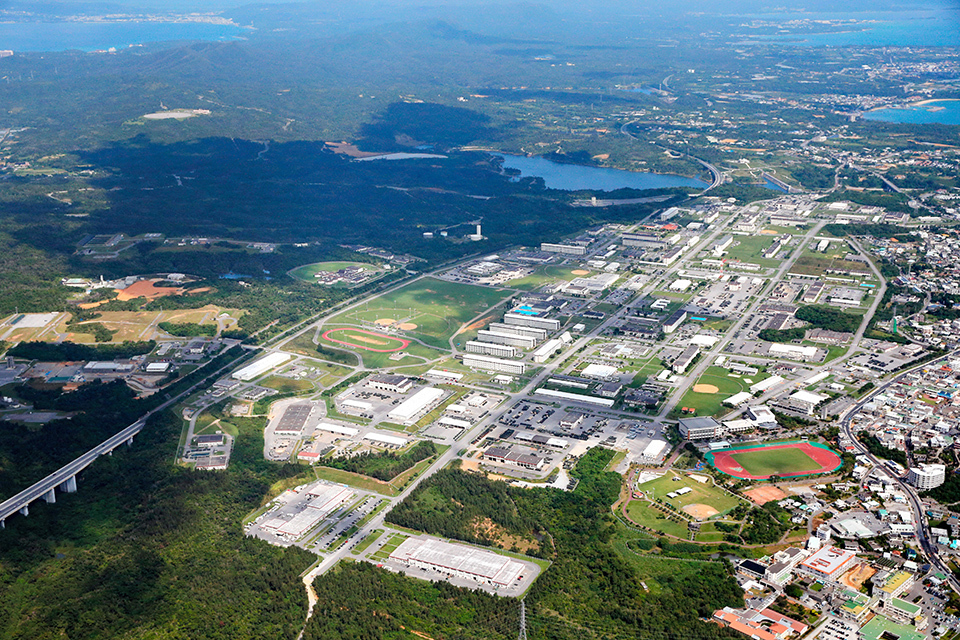
There are 31 USFJ facilities and areas in Okinawa Prefecture alone, including Camp Hansen. THE ASAHI SHIMBUN COMPANY/JIJI PRESS PHOTO
Expected to provide a competitive edge to the prefecture even as a remote island area, tourism has been positioned as a key industry for Okinawa ever since the first days of reversion, with work advancing on essential infrastructure—from transport to accommodation. The world’s first international ocean-themed exposition was held in Okinawa in 1975, helping to cement the prefecture’s image as a beach resort. Coupled with the Japanese postwar economic miracle and airline travel campaigns, the islands saw first an increase in domestic travelers. By 1991, the annual number of visitors had reached 3 million, a large increase from the 450,000 at the time of reversion. From 2000, the islands focused on further building up their tourism resources, including their inscription on the World Heritage List, aiming at attracting visitors from overseas. As a result, as many as 18 air routes from other parts of Asia were established, and the number of travelers exceeded 10 million in fiscal 2018.
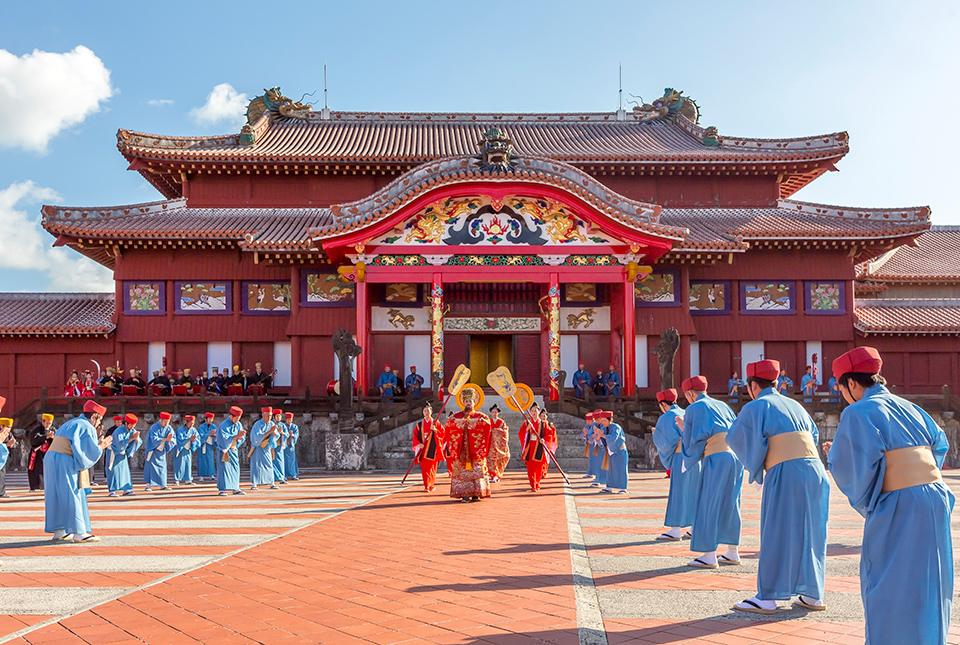
As part of the Gusuku Sites and Related Properties of the Kingdom of Ryukyu, the ruins of Shuri Castle were registered as a World Cultural Heritage site in 2000. This and the G8 Summit, also held on the island that year, served to boost Okinawa’s international profile. The castle burned down in 2019, but thanks to about 5.5 billion yen (42 million dollars) in donations from within and outside Japan, the castle is now under restoration. Kawakami says, “When the castle caught on fire, many Okinawans, including myself, felt a huge sense of loss. I would like to express my deepest gratitude for such enormous support.” WATARU KOHAYAKAWA/AFLO
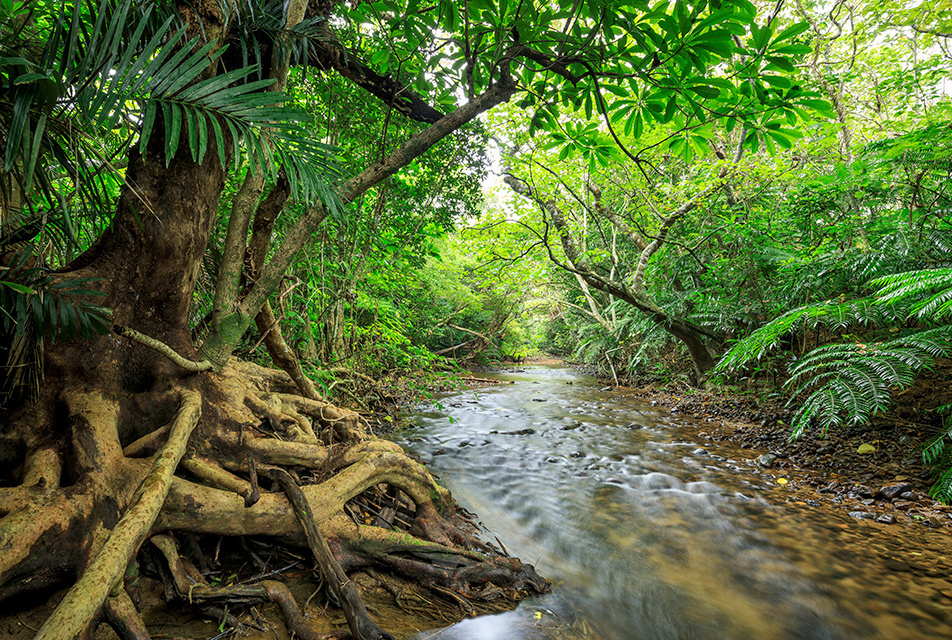
The northern part of Okinawa Island and Iriomote Island, often described as the “Galapagos of the East” due to their many endemic species, have been registered as a World Natural Heritage site. AFLO
Left: As part of the Gusuku Sites and Related Properties of the Kingdom of Ryukyu, the ruins of Shuri Castle were registered as a World Cultural Heritage site in 2000. This and the G8 Summit, also held on the island that year, served to boost Okinawa’s international profile. The castle burned down in 2019, but thanks to about 5.5 billion yen (42 million dollars) in donations from within and outside Japan, the castle is now under restoration. Kawakami says, “When the castle caught on fire, many Okinawans, including myself, felt a huge sense of loss. I would like to express my deepest gratitude for such enormous support.” WATARU KOHAYAKAWA/AFLO
Right: The northern part of Okinawa Island and Iriomote Island, often described as the “Galapagos of the East” due to their many endemic species, have been registered as a World Natural Heritage site. AFLO
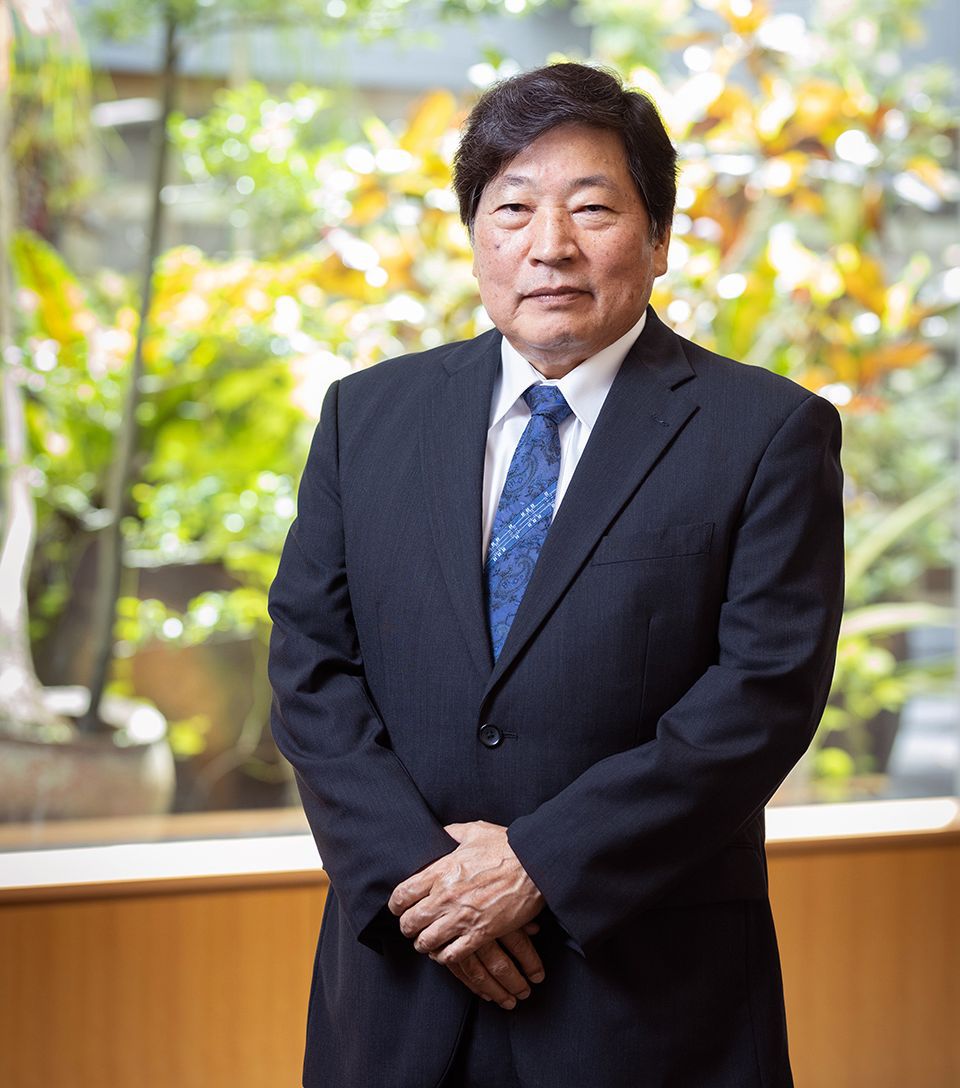
“What is important in sustainable regional development is for the islands of Okinawa to continue being rich and attractive. We need to take care of nature and firmly pass on our history and traditional culture to following generations,” remarks KAWAKAMI Yoshihisa, chief director of the Okinawa Development Finance Corporation. The corporation was established when Okinawa reverted to Japan, and has been providing funds integral to the national government’s measures for the promotion and development of the prefecture.
With its growth as a tourist destination, Okinawa has been confronted by new challenges, including overtourism—with an accompanying excessive dependence on tourism income—as well as socioeconomic damage from the COVID-19 pandemic, intensified by plummeting tourist numbers. But these problems have also presented opportunities for the prefecture to reconsider how tourism should be. Now, aiming for sustainable tourism that is friendly to local communities and the environment, Okinawa is promoting initiatives such as eco tours and environmental measures, including the treatment of marine debris, in compliance with the Global Sustainable Tourism Criteria for Destinations, a widely recognized sustainability guideline.
Okinawa is also taking advantage of its unique local characteristics to pursue paths for further development other than tourism. One example is the initiative it is taking toward decarbonization, which includes the application of renewable energy and ocean thermal energy conversion on remote islands. “It is crucial to closely watch the trends of the times, such as digital transformation and decarbonization, and determine how to design our region to be more competitive,” notes Kawakami. “There are still many local challenges to overcome, but we want to set our sights on becoming a self-sustaining economy and, eventually, a region that can contribute to Japan and the rest of Asia.”
Okinawa will continue to embrace and build upon its distinctive environment and culture, a strong emphasis of efforts made since the 1972 reversion, and explore new possibilities in these changing times.

“What is important in sustainable regional development is for the islands of Okinawa to continue being rich and attractive. We need to take care of nature and firmly pass on our history and traditional culture to following generations,” remarks KAWAKAMI Yoshihisa, chief director of the Okinawa Development Finance Corporation. The corporation was established when Okinawa reverted to Japan, and has been providing funds integral to the national government’s measures for the promotion and development of the prefecture.






























